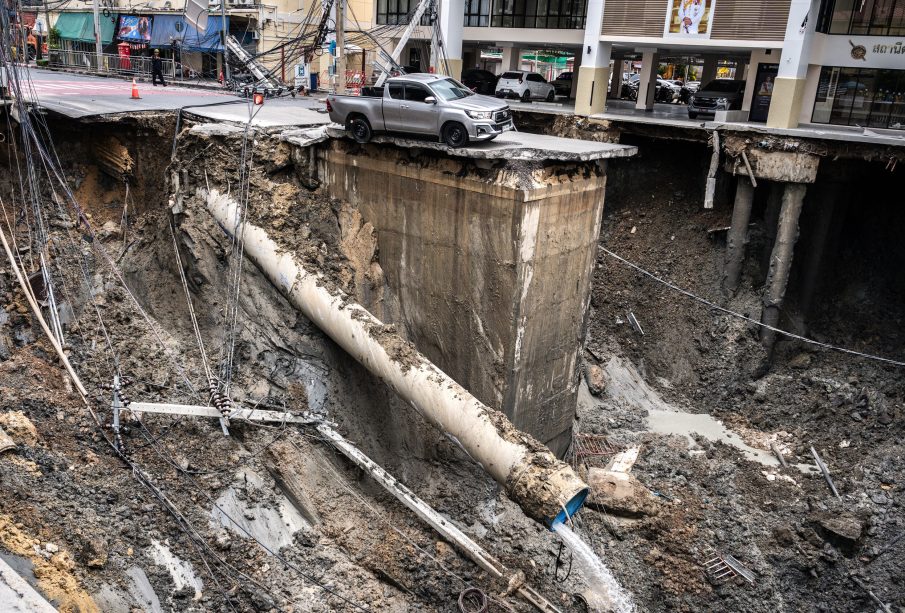Bangkok Sinkhole: A Growing Concern for the City

Introduction
In recent weeks, Bangkok has been grappling with a series of significant sinkhole incidents that have raised alarms among residents and authorities alike. These sudden ground collapses not only jeopardise public safety but also highlight the increasing pressures on the city’s infrastructure. With rapid urban expansion and climatic challenges, the prevalence of sinkholes has become a critical issue that demands urgent attention.
Recent Events
In early September 2023, a large sinkhole erupted in the Chatuchak district, measuring approximately eight metres in diameter and causing major traffic disruptions. This incident followed a similar occurrence in the Khlong Toei area just weeks prior, raising concerns about the geological stability of Bangkok’s older neighbourhoods. Emergency services quickly cordoned off the affected areas, while the Bangkok Metropolitan Administration (BMA) mobilised efforts to assess the situation and repair damaged roads.
The underlying causes of these sinkholes can largely be attributed to the city’s aging drainage systems and excessive rainfall during the monsoon season. Experts suggest that construction activities and ground subsidence due to over-extraction of groundwater have further exacerbated the risk of sinkholes forming. According to geological surveys, Bangkok is situated on soft clay and alluvial soils, making it particularly susceptible to such collapses during periods of heavy rainfall.
Government Response
In response to the rising number of sinkholes, the BMA has announced plans to invest in upgrading the city’s drainage infrastructure and improving maintenance protocols. Officials have also pledged to conduct comprehensive geological studies to better understand the factors contributing to these hazardous events. Local activists and urban planners are urging the government to implement long-term strategies encompassing sustainable urban development, stronger regulations on groundwater extraction, and enhanced public awareness campaigns.
Conclusion
The emergence of sinkholes in Bangkok serves as a stark reminder of the vulnerabilities that urban centres face in the face of environmental challenges and infrastructural deficiencies. As the city continues to grow, it is crucial for policymakers, urban planners, and the community to work collaboratively on proactive measures to mitigate risks associated with sinkholes. Enhanced infrastructure, environmental stewardship, and community awareness could be key in preventing future crises. Failure to address the root causes could lead to more frequent sinkholes and increased danger for the citizens of Bangkok.









